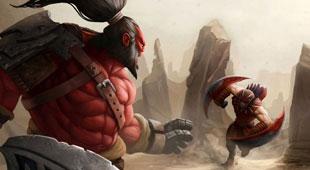The guitar, a stringed instrument that has develop into synonymous with music across cultures and genres, has a wealthy history that traces again to historic times. Its evolution from rudimentary stringed devices to the sophisticated guitars we all know today is an interesting journey that displays the development of music itself. This article explores the origins of the first guitar, its transformation over centuries, and its influence on music and society.
The earliest form of the guitar can be traced again to historic civilizations. Instruments resembling the guitar have been found in various cultures, together with the lute in Europe, the oud within the Middle East, and the tanbur in Central Asia. These early devices typically featured a hollow physique and strings that had been plucked or strummed, very similar to the trendy guitar. The earliest depictions of stringed instruments just like the guitar date back to round 3000 BC in Mesopotamia, where artifacts show musicians taking part in instruments with long necks and rounded our bodies.
The term “guitar hero” itself is believed to have originated from the Spanish word “guitarra,” which has roots in the Latin phrase “cithara,” a time period used to describe a stringed instrument played in historical Rome. The evolution of the guitar might be divided into several key phases, every marked by vital developments in design and construction.
In the course of the Middle Ages, the guitar began to take on a more recognizable kind. The instrument was usually referred to as the “guitarra moresca,” which featured a rounded again and a flat high. This model of the guitar had 4 strings and was primarily utilized in folk music. By the fifteenth century, the instrument had developed additional, with the addition of a fifth string, and turned in style among troubadours and minstrels who roamed the streets, sharing stories by way of tune.
The Renaissance interval noticed the guitar’s reputation surge, significantly in Spain, where it turned a staple in both courtly and folks music. The introduction of gut strings allowed for a richer sound, and the instrument’s design continued to evolve. Luthiers, or guitar makers, began experimenting with different sizes and styles, leading to the event of the Baroque guitar, which featured six programs (pairs of strings) and a wider neck. This instrument was favored by composers and musicians of the time, including the famend Spanish composer Fernando Sor.
As the Baroque guitar gained prominence, so did the rise of classical guitar music. The 19th century marked a major turning level within the history of the guitar, as it transitioned from a folk instrument to a respected classical instrument. This interval saw the emergence of the trendy classical guitar, characterized by its larger physique, six single strings, and a wider fingerboard. The improvements of luthiers corresponding to Antonio de Torres, who is usually credited with creating the trendy guitar shape, performed a vital position on this transformation.
The guitar’s versatility and accessibility contributed to its widespread enchantment. By the late 19th and early 20th centuries, the guitar found its way into various triangle musical instrument genres, together with blues, jazz, and rock and roll. The introduction of steel strings revolutionized the instrument’s sound, permitting for larger volume and sustain. Iconic musicians like Robert Johnson and Django Reinhardt showcased the guitar’s capabilities, inspiring numerous others to pick up the instrument.
The electric guitar emerged within the nineteen thirties, marking another significant milestone within the instrument’s evolution. With the invention of the pickup, which amplified the sound of the guitar, musicians had been capable of discover new sonic prospects. The electric guitar turned the spine of rock music, with legendary figures like Chuck Berry, Jimi Hendrix, and Eric Clapton pushing the boundaries of what the instrument could achieve. The guitar became a logo of rebellion and youth culture, shaping the sound of generations.
Throughout its historical past, the guitar has performed a pivotal function in cultural movements and social change. From the folks revival of the 1960s, where artists like Bob Dylan used the guitar as a instrument for political expression, to the punk rock motion that challenged societal norms, the guitar has been an instrument of empowerment. Its presence in common music has transcended borders, uniting folks through the universal language of music.
Today, the guitar continues to evolve, with developments in technology and design shaping its future. From acoustic to electric, from traditional to experimental, the guitar stays a versatile instrument that adapts to the altering landscape of music and instrument. Digital results, synthesizers, and progressive enjoying techniques have opened up new realms for guitarists, permitting them to discover uncharted territories in sound.
The primary guitar, in all its various types, has left an indelible mark on music historical past. Its journey from historical stringed instruments to the fashionable guitar embodies the spirit of creativity and innovation. As musicians proceed to push the boundaries of what is possible, the guitar will undoubtedly remain a central determine on this planet of music, inspiring future generations to select up the instrument and share their tales via tune.
In conclusion, the guitar’s history is a testament to the power of music as a technique of expression and connection. From its humble beginnings to its status as a cultural icon, the guitar has shaped the soundscape of our world. Whether strummed round a campfire, performed in a concert corridor, or used in a recording studio, the guitar continues to resonate with folks, proving that it’s extra than just an instrument; it’s a vessel for creativity, emotion, and the human expertise.
If you have any issues pertaining to where by and how to use musica cristiana instrumental, you can speak to us at our site.








Leave feedback about this